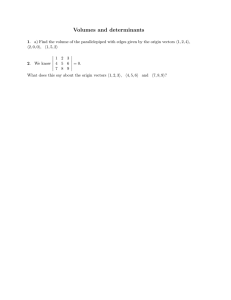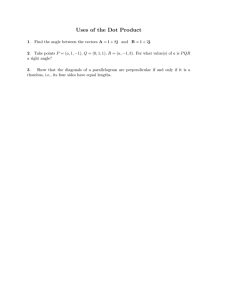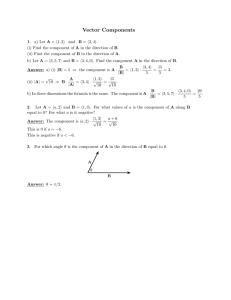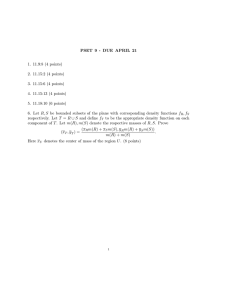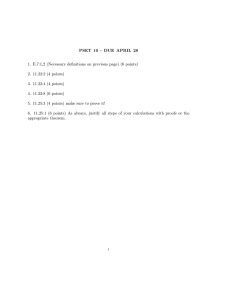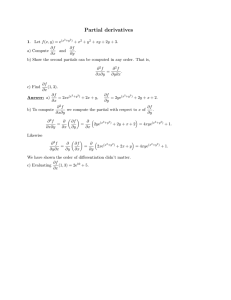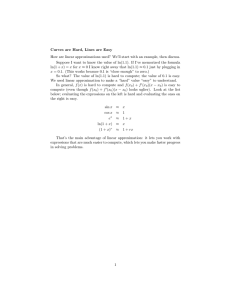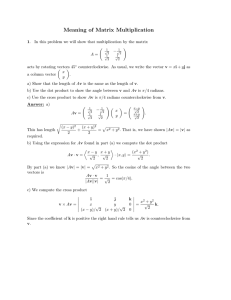Document 13739667
advertisement
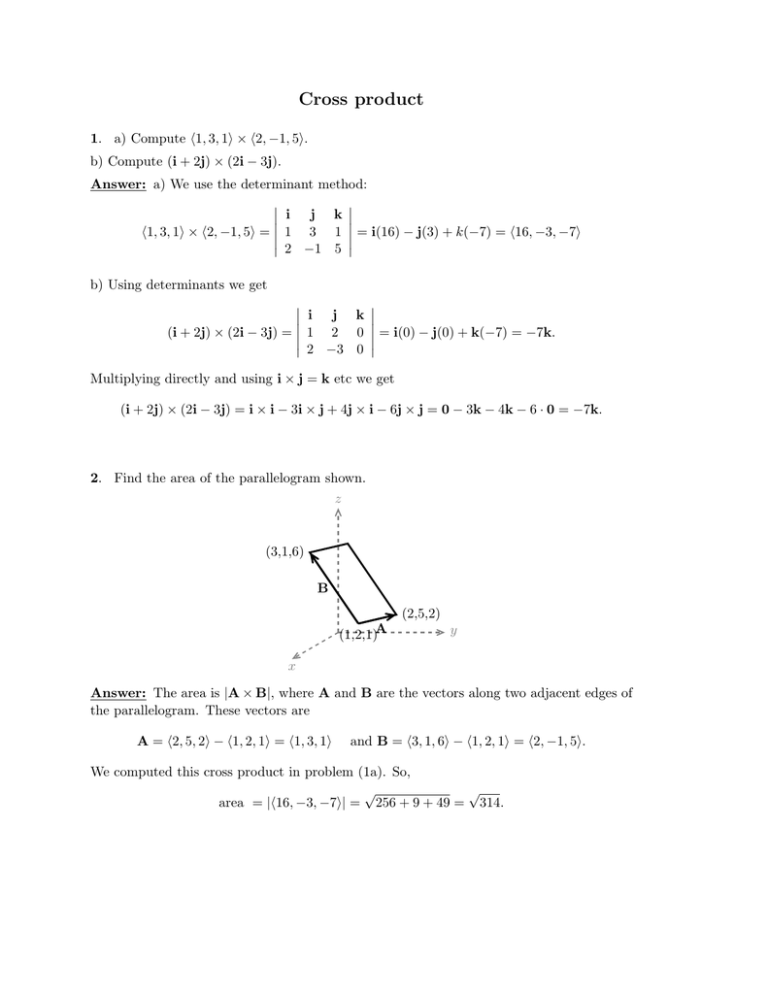
Cross product 1. a) Compute �1, 3, 1� × �2, −1, 5�. b) Compute (i + 2j) × (2i − 3j). Answer: a) We use the determinant method: � � � i j k � � � �1, 3, 1� × �2, −1, 5� = �� 1 3 1 �� = i(16) − j(3) + k(−7) = �16, −3, −7� � 2 −1 5 � b) Using determinants we get � � � i j k � � � (i + 2j) × (2i − 3j) = �� 1 2 0 �� = i(0) − j(0) + k(−7) = −7k. � 2 −3 0 � Multiplying directly and using i × j = k etc we get (i + 2j) × (2i − 3j) = i × i − 3i × j + 4j × i − 6j × j = 0 − 3k − 4k − 6 · 0 = −7k. 2. Find the area of the parallelogram shown. z (3,1,6) B (2,5,2) (1,2,1)A y x Answer: The area is |A × B|, where A and B are the vectors along two adjacent edges of the parallelogram. These vectors are A = �2, 5, 2� − �1, 2, 1� = �1, 3, 1� and B = �3, 1, 6� − �1, 2, 1� = �2, −1, 5�. We computed this cross product in problem (1a). So, √ √ area = |�16, −3, −7�| = 256 + 9 + 49 = 314. MIT OpenCourseWare http://ocw.mit.edu 18.02SC Multivariable Calculus Fall 2010 For information about citing these materials or our Terms of Use, visit: http://ocw.mit.edu/terms.
